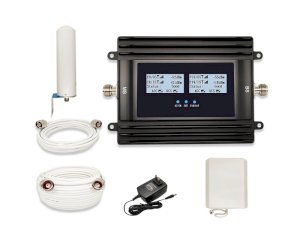
In recent years, the importance of LTE frequency bands for mobile operators in the United States and Canada has become increasingly evident. These frequency bands play a crucial role in ensuring efficient and reliable wireless communication. This article aims to provide an updated overview of the significance of LTE band, highlighting its role in facilitating seamless connectivity for users.
It is worth mentioning that this article will focus solely on USA and Canada LTE bands and exclude the discussion of 3G frequency ranges, as well as include a brief mention of the emerging 5G technology. By narrowing down the scope, we can delve into the specifics of the USA and Canada LTE bands and shed light on their importance in the telecommunications industry.
LTE frequency bands explained
Frequency generated by mobile towers is calculated by MHz (megahertz) and generally denoted with the help of one particular number. But only one numerical value can't be accurate for determining the generated frequency because one numerical value consists of several number of frequency values. As an example, 600 MHz denotes frequency bands 617 to 698 MHz.
A frequency band that is used by different network providers is marked in sequence and demonstrates sections of one particular frequency band range. A band can be shared by multiple providers or only one band is assigned to a single provider.
In some providers, you will also notice that they use multiple ranges for different places. Why do they do so? Providers use separate frequency bands in different locations to give their customers best service - a higher range for urban areas and a comparatively lower range for rural areas.
Can a mobile become compatible with a different carrier's LTE and 5G frequency bands?
In today's market, there are several popular network providers, such as Verizon, AT&T, T-Mobile, Sprint, and others, each utilizing their own unique bands to supply networks to their users. If you are considering switching to a different phone network provider, it's crucial to contact the carrier first and inquire about your device's compatibility. Many carriers lock phones to their network, so it's essential to confirm whether your device is locked or not.
To determine if your device supports the LTE and 5G frequency bands of a specific carrier, you can conveniently search online for your mobile device's specifications. It's important to review these specifications to ascertain which LTE and 5G frequency bands are compatible with your phone, ensuring optimal signal speed and performance.
If you're concerned about your phone's signal speed, it's worth exploring various internet speed apps. These apps can provide valuable insights into your internet speeds and help you monitor the efficiency and reliability of your network connection.
US LTE Bands
AT&T LTE bands
700 MHz → Bands 12, 14, 17, 29, B71
850 MHz → Band 5
1700 MHz → Bands 4, 66
1900 MHz → Band 2
2300 MHz → Band 30
Sprint LTE Bands
2300 MHz → Band 30
1900 MHz → Band 25
2500 MHz → Band 41
T-mobile LTE Bands
700 MHz → Band 12
850 MHz → Band 5
1700 MHz → Bands 4, 66
1900 MHz → Band 2
Us Cellular LTE Bands
700 MHz → Band 12
850 MHz → Band 5
1700/2100 MHz → Band 4
1900 MHz → Band 2
Verizon LTE Bands
700 MHz → Band 13
850 MHz → Band 5
1700/2100 MHz → Bands 4, 66
1900 MHz → Band 2
Boost Mobile LTE Bands
800 MHz → Band 26
1900 MHz → Band 25
2500 MHz → Band 41
Canada LTE Bands
Bell LTE Bands
700 MHz → Bands 12, 13, 17, 29
850 MHz → Band 5
1700/2100 MHz → Band 4
1900 MHz → Band 2
2600 MHz → Band 7
Rogers Wireless LTE Bands
700 MHz → Bands 12
1700/2100 MHz→ Band 4
2600 MHz → Band 7
Telus LTE Bands
700 MHz → Bands 13, 17, 29
850 MHz → Band 5
AWS → Band 4
1900 MHz → Band 2
2600 MHz → Band 7
Obtaining accurate information about LTE frequency bands is crucial for ensuring optimal network performance. The compatibility of LTE frequency bands plays a significant role when selecting devices or smartphones. It is essential to consider the LTE bands USA or Canada supported by your carrier when making a decision, as it directly affects the quality and speed of your wireless connection.
Moreover, it is worth noting that the deployment and evolution of LTE frequency bands and 5G technology are still ongoing in the United States and Canada. As technology continues to advance, we can expect further enhancements and expansions of LTE bands and 5G to meet the increasing demands for faster and more reliable wireless communication.
We can’t say for sure which 4g band is fastest, but staying informed about LTE frequency bands and their compatibility is vital for both network operators and consumers. By understanding and utilizing the appropriate LTE bands USA and Canada, we can ensure seamless connectivity and take full advantage of the advancements made in the telecommunications industry.







